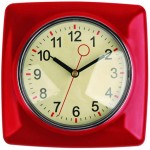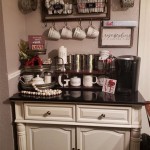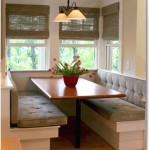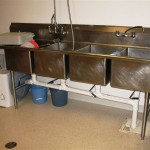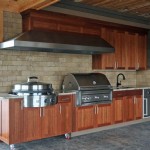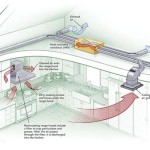Finger Pulls For Kitchen Cabinets: An In-Depth Look
Finger pulls have become increasingly popular in modern kitchen design, offering a sleek and minimalist alternative to traditional knobs and handles. They are prized for their ability to create a clean, uncluttered aesthetic, blending seamlessly with cabinet fronts. This article will explore the different aspects of finger pulls, covering their types, advantages, installation considerations, and design impact within the kitchen space.
A finger pull, also known as an edge pull or lip pull, is a type of cabinet hardware designed to be discreetly mounted on the edge or recessed within the door or drawer. Its primary function is to provide a small space for fingertips to grip and open the cabinet. Unlike knobs and handles that protrude from the cabinet surface, finger pulls maintain a flush or near-flush profile, contributing to a streamlined and contemporary design.
Types of Finger Pulls
The market offers various types of finger pulls, each with its unique construction and installation method. Understanding these differences is crucial for selecting the appropriate pull for a specific kitchen design and cabinet style.
Integrated Finger Pulls: These pulls are designed to be routed directly into the edge of the cabinet door or drawer front. This creates a seamless, almost invisible pull. The installation requires precise routing using specialized tools and is typically best suited for custom cabinet fabrication or professional installation. Integrated pulls often have a minimalist aesthetic and provide a very comfortable grip.
Surface-Mounted Finger Pulls: As the name suggests, these pulls are mounted on the surface of the cabinet door or drawer. They are typically attached using screws and are easier to install than integrated pulls. Surface-mounted pulls are available in a wide range of styles and finishes, making them a versatile option for various kitchen designs. They often feature a slim profile and can be applied to existing cabinets, making them an ideal choice for renovations.
Recessed Finger Pulls: These pulls are partially embedded into the cabinet door or drawer, creating a shallow recess for the fingers. Installation involves creating a mortise or groove to accommodate the pull. Recessed pulls offer a balance between the seamless look of integrated pulls and the ease of installation of surface-mounted pulls. They provide a secure grip while maintaining a low profile.
Edge-Mounted Finger Pulls: These pulls attach to the top or side edge of the cabinet door or drawer. They can be installed on frameless or framed cabinets. Edge-mounted pulls come in various styles, from simple straight bars to more decorative designs. They offer an alternative solution for cabinets where a full recess or surface mount is not desired. Some edge-mounted pulls also feature a small lip or curve for enhanced grip.
Advantages of Using Finger Pulls
Finger pulls offer several distinct advantages over traditional cabinet hardware, making them a compelling choice for modern kitchen design. These advantages extend beyond aesthetics, encompassing functionality, safety, and ease of maintenance.
Minimalist Aesthetic: The primary advantage is the clean and uncluttered look they provide. By eliminating protruding knobs and handles, finger pulls create a smooth, uninterrupted surface, contributing to a minimalist and contemporary aesthetic. This is particularly desirable in modern kitchen designs that emphasize simplicity and functionality.
Space Saving: Finger pulls can be particularly beneficial in smaller kitchens or high-traffic areas where protruding hardware can be obstructive. They minimize the risk of bumping into or catching on knobs and handles, improving traffic flow and creating a more comfortable environment. This feature is also advantageous in kitchens with narrow aisles or limited space between cabinets and appliances.
Enhanced Safety: By reducing the projection of hardware from the cabinet surface, finger pulls can enhance safety, especially in households with young children or individuals with mobility issues. The absence of protruding elements minimizes the risk of accidental bumps and injuries. This is particularly relevant in areas where children may be playing or where individuals with limited mobility require unobstructed access.
Easy to Clean: The streamlined design of finger pulls makes them easy to clean and maintain. The absence of intricate details and crevices reduces the accumulation of dirt and grime. A simple wipe with a damp cloth is typically sufficient to keep them looking clean and new. This is a significant advantage in the kitchen, where surfaces are frequently exposed to spills and splatters.
Versatile Design Options: Despite their minimalist nature, finger pulls offer a wide range of design options. They are available in various materials, finishes, and styles, allowing them to be integrated seamlessly into different kitchen designs. From sleek stainless steel to warm brass, finger pulls can complement a wide range of cabinet colors, materials, and styles.
Installation and Considerations
Proper installation is crucial for the function and longevity of finger pulls. Several factors must be considered to ensure a secure and aesthetically pleasing result. These considerations include cabinet construction, pull placement, and the use of appropriate tools and techniques.
Cabinet Construction: The type of cabinet construction, whether framed or frameless, will influence the type of finger pull that is suitable. Frameless cabinets typically offer more flexibility in terms of pull placement and style. Framed cabinets, with their face frames, may require specific types of pulls that can be mounted on the frame or adapted to fit within the frame. The thickness and material of the cabinet doors and drawers will also determine the appropriate screw length and the need for pilot holes.
Pull Placement: The placement of finger pulls is a critical design decision that impacts both aesthetics and ergonomics. The height and position of the pull should be comfortable and accessible for all users. Standard guidelines suggest placing finger pulls approximately one to two inches from the top edge of drawers and at a corresponding height on cabinet doors. However, individual preferences and specific kitchen layouts may warrant adjustments to these guidelines. It’s advisable to mock up the placement before final installation to ensure optimal comfort and accessibility.
Installation Tools and Techniques: Proper tools and techniques are essential for a successful installation. A power drill with the correct size drill bits is necessary for creating pilot holes and securing the pulls with screws. A screwdriver, preferably with magnetic tips, is needed for tightening the screws. A level can be used to ensure that the pulls are aligned horizontally. Measuring tape and a pencil are required for accurate marking. For integrated pulls, a router with appropriate bits and templates is necessary for creating the recess in the cabinet door or drawer. It is crucial to follow the manufacturer's instructions for installation and to use appropriate safety precautions when working with power tools.
Screw Length and Material: Selecting the correct screw length is vital to prevent damage to the cabinet door or drawer. Screws that are too long can protrude through the back of the door or drawer, while screws that are too short may not provide sufficient holding power. The screw material should also be considered. Stainless steel screws are recommended for durability and resistance to corrosion. The screw head should be compatible with the countersink in the finger pull to ensure a flush and secure fit.
Accessibility Considerations: When selecting and installing finger pulls, it is essential to consider accessibility for all users. Individuals with limited mobility or dexterity may find it difficult to grip small or shallow finger pulls. Opting for larger or more ergonomically designed pulls can improve accessibility. The placement of the pulls should also be adjusted to accommodate individuals with different reach capabilities. In some cases, alternative hardware options, such as lever handles, may be more suitable for individuals with significant mobility limitations.
In conclusion, finger pulls represent a significant trend in modern kitchen design, offering a blend of aesthetics, functionality, and safety. By carefully considering the various types, advantages, and installation considerations, homeowners and designers can effectively integrate finger pulls into their kitchen designs, creating a stylish and user-friendly space.

Choosing The Right Cabinet Hardware All My Best Advice For Homeowners

How To Put Hardware Knobs Handles On Kitchen Cabinets

Where To Put Handles Knobs Pulls On Kitchen Cabinets

How To Put Hardware Knobs Handles On Kitchen Cabinets

Where To Put Handles Knobs Pulls On Kitchen Cabinets

Kitchen Cabinet Hardware Replacement Guide June 2025

How To Measure Cabinet Pulls For Your Kitchen Like A Pro Maxave

Choosing The Right Cabinet Hardware All My Best Advice For Homeowners

Where To Put Handles Knobs Pulls On Kitchen Cabinets

Types Of Cabinet Hardware And How To Choose What S Right For You
Related Posts


